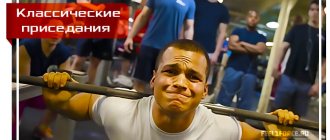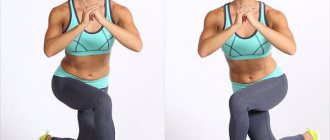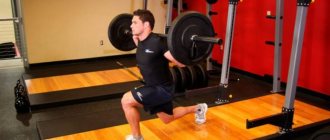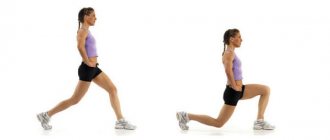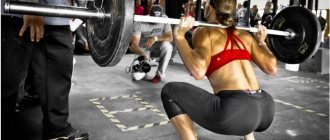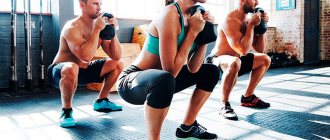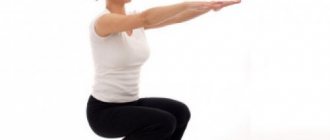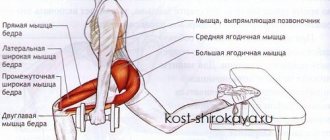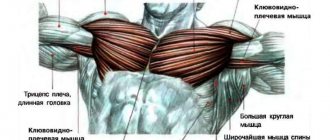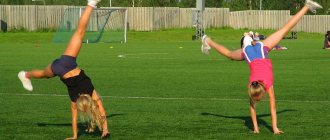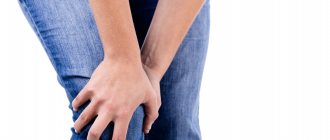Author: Vasily Roldugin - coach and master of sports in powerlifting | more details >> Master of Sports of Russia in powerlifting (IPF). 20 years of training experience. Trained 4 masters of sports and 15 candidates for IPF master of sports. Trained 1st international master of sports and 3 AWPC masters of sports. Prepared 1st World record holder and 3 WPC masters of sports. Coaching experience 15 years.
Place in the ranking of authors:
6
(become an author)
Date:
2014-11-01
Views:
44,155
Rating:
4.1
| All articles by the author >> | Medals articles >> |
Articles are loading...
As you know, in powerlifting the overall result shown by the athlete in competitions is important. But it does not appear out of nowhere, but consists of the results of three competitive exercises: squat, bench press and deadlift. This is why all lifters strive to improve their performance in each of these lifts, thereby increasing their eventing total.
This exercise is not only the most energy-intensive and difficult to coordinate in the competitive powerlifting troika, but also the first in the competition program. That is why a successful and highly productive squat not only lays the “cornerstone” in the final sum, but also determines the overall mental attitude of the athlete for further struggle.
Therefore, I propose to approach increasing the results in this exercise in a comprehensive manner, and pay attention to the following points:
You need to squat less often
When it comes to gaining muscle mass and increasing strength, the saying best applies: “less is more.” There is a common belief that in order to become stronger at a particular exercise, you need to do it as often as possible. This seems quite logical. And honestly, for some, this may be the right decision. But for most of us this principle does not work. The truth is, if you want to squat really heavy weights, training often is usually the wrong way to go. In this case, more does not mean better. Many experienced athletes often do heavy squats with a barbell (only!) once every 2 weeks. Yes, this is not a mistake, you read it correctly. But the intensity of their training is so great that the body really needs that much time to recover. The principle here is the same as in deadlift training. Trying to do heavy deadlifts every week can be detrimental to your results. At the same time, some guys do it twice a week and wonder why the hell they can't get stronger? Although the back squat is not as heavy an exercise as the deadlift, most people still do it too often. This doesn't mean you have to squat (just!) once every two weeks, but you should try. This will allow for at least one assisted leg workout (more on this below) between squat days. This approach often pays dividends.
Strengthen your back
The spinal column is your “gearbox”, which allows you to use the maximum amount of energy when squats. The lumbar erector muscles are perhaps the most important muscle group for building a strong core and allowing you to safely perform a variety of exercises.
Strengthen your back muscles with deadlifts, hip stretches and a special “good morning” exercise (translated as “good morning” and is a series of exercises aimed at flexing and extending the back with a special weight placed on the neck). Additionally, work on strengthening your upper back muscles by doing barbell rows and pull-ups.
You need to train your legs less often
This is truly a fundamental approach to training each muscle group. You need to train less if you want to lift heavy weights in all exercises. Exercising too often is one of the biggest problems boys and girls face. Especially people over 30 and 40 years old. This does not mean that it is impossible to gain muscle mass and increase strength at an older age as well as in your 20s. However, recovery from exercise is typically slower. And this is completely normal. You just don't need to train too often. After a hard leg workout, it is advisable to give the quadriceps, hamstrings, and other leg muscles a full opportunity to recover. And this will be the main driving factor when it comes to being able to squat heavier weights. Fully rested legs become stronger .
Often, the only thing stopping guys and girls from really increasing their barbell squats (bench press, military press, deadlift, etc.) is that they simply try to train too often. Get more rest. Become stronger. This is a great way to achieve better results.
Do Assistance Exercises (And Here's Why)
Think about the barbell squat for a minute. What major muscle groups are involved? Quadriceps, glutes and hamstrings. At least that's what most athletes think. And it's not that this is the wrong answer. There are many other stabilizing muscles that are also actively involved. Everyone knows that back squatting is much more effective without using a Smith machine because it develops stabilizing muscles. Such as:
- m. gastrocnemius (calf);
- m. biceps femoris (thigh biceps);
- m. vastus medialis (vastus medialis muscle).
It is the stabilizing muscles that need to be strong.
Weak stabilizers can seriously hinder results.
Most often, we don’t even notice them, because they are compensated by the work of other more powerful muscle groups. But if we train each of these stabilizers separately, we will be able to detect and prevent their weakness. When any of these muscles are underdeveloped, it can negatively affect how much weight we can squat on the barbell. Let's look at an example. Let's say you have very strong quadriceps, but your hamstrings are significantly behind. By the way, this is a fairly common problem and, moreover, one of the main causes of pain in the knee joints . In this case, the hamstring muscles will be the weak link. We all know the saying that a chain is only as strong as its weakest link. This is exactly the case in our case. Often you see guys and girls who only do back squats during leg training. They make no progress because the load is not aimed at developing weak muscles. Quadriceps dominate. If you want to develop the hamstring muscles, then you need to focus specifically on training them. This is where assistance exercises will make a huge difference for those looking to quickly increase their barbell squat performance. Moves like stiff-legged deadlifts, Romanian deadlifts, and good mornings are great hamstring assistance exercises. They prevent these muscles from hiding behind the stronger quadriceps. These exercises are especially popular among the fair half of humanity, along with squats for women. You should do one of these assistance exercises on leg day . In other words, this is a must if you want to squat with maximum results. There are many assistance exercises. The hamstrings are just one example. Now let's talk about the gluteal muscles. Weak buttocks will also not allow you to achieve a good result. This is where the Romanian deadlift can be a very useful movement. Step ups are another great exercise for the buttocks. Well, about quadriceps. Some guys have them underdeveloped, and this is the main muscle group involved in barbell squats. Their weakness can be a major obstacle. For them, there are the following auxiliary exercises: front squats, hack squats and deadlifts. There is one more nuance here. Many people do deadlifts regularly but do them incorrectly. The main idea of the deadlift is that it is a pushing movement for the legs. At the same time, we push powerfully off the floor with our feet, and this creates a lot of stress on the quadriceps. This is why they get very tired during deadlifts if done with the correct technique. This is a great exercise to help you progress with your barbell squats. As mentioned above, many experienced athletes train their legs once every 7-10 days. It may come as a surprise to you, but they also don't do squats during every leg workout. One week they squat with a barbell, and the next week, during leg day, they perform auxiliary exercises . That is, 14 days pass between squat workouts.
Training squats once every 14 days (with one leg day in between for assistance exercises) helps increase your barbell squat performance.
This goes against most standard bodybuilding advice, which recommends squatting every week. This may be correct in theory (and effective for beginner athletes), but in practice it works worse.
Correct technique for healthy squats
We already know the benefits of squats for girls. But it is important not to make mistakes when performing the exercise, which can negate all its positive properties. The most common mistake women make is squats that are too low, in which the buttocks drop almost to the floor. It is recommended to bend your knees no more than 90 degrees. Otherwise, you significantly increase the risk of injuring tendons and joints. This is especially true for weighted squats. Your thighs should be parallel to the floor. This is especially important for beginners. It is recommended to adhere to the following recommendations:
Squats are practical. Not just functional squats, but also practical ones that can translate into many everyday tasks. Whether working outdoors, playing with children, or playing pickup games in basketball, everyone can benefit from squatting. Squats can be done in different ways. From full back squats to front squats, the squat has a seemingly endless list of options to choose from.
Squats are cheap. Squats do not require an expensive machine or apparatus. You can use a rack or even a pair of dumbbells - whatever you need to get the job done. Overhead squats, kettlebell squats, and dumbbell squats require minimal equipment. Heck, even a sandbag or barrel will work!
- Keep your back straight
and don't slouch. From the back of the head to the tailbone, the body should be a straight line. No need to sway from side to side. Also, don't rush too much. Do the exercise smoothly, slowly and carefully, so you can monitor the correct technique. - The abdominal muscles should be slightly tense
. This will make it possible to fix the spine and also straighten the back. Tight abdominal muscles are especially important when using weights. Thanks to a strong press, we receive protection from injury. - As already mentioned, before the exercise you definitely need to warm up
and warm up. If you're doing a set of exercises, put squats somewhere in the middle. - Keep your feet shoulder-width apart. Make sure that your knees do not protrude further
than your toes. - Do not lift your feet off the floor, do not stand on your toes. The main load should be placed on the middle of the foot. This option is the most effective. If you find it difficult to not raise your heels, you can place a block under them. It is only important that they do not come off the support.
- If you do not use additional weight, you can repeat the exercise quite many times - up to 50 or more. With weights, it is enough to squat 15-35 times, dividing them into several approaches.
- Stop
squatting if you experience
pain
in your knees or back. If it does not go away or bothers you regularly, consult your doctor.
Squats on a bench (box)
It would be correct to classify squats as auxiliary exercises. But it deserves its own category because it is especially effective for increasing squats. Confidence is very important during leg curls. This is not about not being afraid of the exercise itself, but this, most likely, can be called a “muscle feeling.” Imagine for a second that you are squatting with a heavy weight. Several repetitions with 70-80% of one repetition maximum (1RM). After stepping back from the racks with a heavy barbell on your shoulders and starting to move down, the thought runs through your head: “how hard it will be to get back!” So with heavy weights we try to go down very slowly. Self-confidence decreases, especially when we drop to “parallel” or below. Therefore, in the eccentric phase (on the descent) we move timidly (with caution). This leads to an interesting consequence: the buttocks and hamstrings cannot fully engage in the movement during the lifting phase . What happens is that the quads are too tight to try to slow the descent, and we fail to switch to an explosive thrusting movement of the glutes and hamstrings from the bottom of the exercise. Now let's look at squats on a bench (box). This is essentially an exercise that separates the eccentric phase (lowering) and the concentric phase (standing up). You may have noticed that some powerlifters do them very often. And there are those who train bench (box) squats as often (and sometimes more often) than free (without a bench) squats. When you lower yourself with more weight on your back, and know that you are sitting on a bench, it allows you to perform the movement more smoothly. What gives you confidence. You don't try to slow your downward movement as much as possible for fear of being crushed by the heavy barbell. Pause to sit on the box (bench), while trying as much as possible to maintain tension in your torso (core). This will allow the glutes and hamstrings to be fully engaged as you rise up from the bench, due to the fact that you will have to lean forward slightly when lifting off the bench. And this is the ideal trajectory of the body when lifting upward .
If the quadriceps are overstrained during the lowering phase, then the redistribution of the load on the buttocks and the back of the thigh does not occur completely. Bench squats help correct this by forcing the muscles to fire more efficiently and improve results quickly.
Squatting: what is harmful to health
However, despite all its usefulness, this exercise can also cause harm to the body. The fact is that the knee joints, even during normal walking, take on too much load. This is due to the fact that man became upright not so long ago. Previously, the load was evenly distributed across four limbs, as a result of which our ancestors did not have any special problems in this area. Many athletes suffer from problems due to their knees - any sprinters, football players, marathon runners, that is, all those who run a lot and quickly.
The same problems beset bodybuilders. The disadvantage of squats with heavy weights is that they overstretch the knee tendons, which weakens the joints. Professional athletes use a special group of drugs - chondroprotectors - to minimize the consequences of such squats. You are advised to perform such squats either with the help of an instructor or with minimal weight.
Injuries are possible only in the following cases:
1. If you do squats with weights. Our own weight is already enough load for our knees, which they can at least cope with. Squats overstretch the tendons and put stress on the joints. If performed in moderation and without additional weight, they are unlikely to harm you. But, if you are involved in strength sports, then you definitely need to warm them up well before the exercise, and also use various joint supports.
2. Some people may have knee joint problems. If they experience pain even when running, then they should not do squats - otherwise the problem will worsen, and more noticeable destruction will occur in the joint.
3. Also, those who have problems with the spine, scoliosis, or diseases of the cardiovascular system should not do this exercise.
4. Overweight. Wide bones, of course, are a very convenient excuse, but, alas, nature does not provide for wide joints. Therefore, overweight people should do this exercise very carefully. In particular, it is better to perform them in small quantities, using special bandages for tying the knee joints.
Squats can be harmful if performed incorrectly
. This is especially true when they are performed with additional weight. You cannot slouch or arch your back - otherwise it will receive too much stress.
Even before regular squats, you should warm up well.
and stretch your joints and tendons. If you try to perform a large number at once when the tissues are not warmed up, this is fraught with sprain or rupture of ligaments, as well as joint injuries.
When performed by older adults, additional precautions are taken. In particular, be sure to do a long warm-up before starting. All joints and tendons should be warmed up very well.
In most cases, the benefits of squats many times exceed the harm from them. But, if you have even the slightest pain in your knees, you should immediately consult a doctor.
Perform abduction exercises
It is very difficult to keep your legs stable during barbell squats. At the bottom point, the knees begin to close (deviate inward), as if some force is pressing from the outside on the hips, when trying to lift the weight. The reason lies in the biomechanics of movement. The hips become unstable when we squat with a lot of weight on the back, especially when going below parallel. There are several things you can do to make your hips more stable. One of them is training the abductor muscles.
In fact, many people have very little development of these muscles. You can often find athletes with huge legs, but weak abductor muscles. We discussed this phenomenon in detail in an article on how to quickly get rid of lower back pain. To prevent your knees from closing inward, you need to perform abduction exercises. Some gyms have special machines for this.
However, it is best to train them with an expander (harness). All you need to do is put a tourniquet on your thighs or shins and perform a few side steps in a half squat, as in the picture. Perform 3 sets of 10-12 repetitions to the right and left on the day you do other auxiliary leg exercises. It completely puts the load on the outer surfaces of the thighs and buttocks. Most guys are shocked at how much the abductor muscles hurt (at first). Over time, this will significantly impact your squat progress and overall hip stability.
Why does this happen?
at the moment of squatting, the back, abs, gluteal and thigh muscles experience a tensile load;- when straightening your legs, dynamic pressure is added to them, since your body itself plays the role of a load;
- muscle load causes increased blood circulation, positively affecting blood vessels;
- tissues begin to be more actively supplied with oxygen, and after a certain time they begin to be freed from lipids.
It is impossible to answer the question of how quickly fat is burned. The rate of destruction of its deposits depends on the duration, speed, number of approaches, the presence or absence of additional weights and some other factors. But as an example, we can give the following calculation: with a body weight of 60 kg, squats at an average pace (1 squat per 3 seconds) will burn about 250 kcal in 30 minutes. Of course, you won’t be able to squat without a break for that long. But if you do 6 approaches a day, 5 minutes each, you will get the same result.
It should be remembered that squats are not always possible.
This exercise should not be done in the following cases:
- for injured hips, knees or ankles;
- during the rehabilitation period after recent fractures;
- with inflammation or severe muscle strains;
- for other diseases accompanied by high fever.
With caution and only after consulting a doctor:
- pregnant women;
- overweight people (body weight index 30 units or more);
- with high fragility of bones and joints.
Main conclusions
There are other things that can be easily put into practice to increase your back squat that we haven't discussed here. Most of them are related to the technique of performing the exercise. One of the best technique tips, according to many, is to simultaneously (synchronously) lift your hips and chest . Some say to maintain a neutral spine position. Well, the best way to achieve this is to lift your chest and hips at the same time. This will keep the spine in a neutral position and prevent compression of the chest. There are other tips too. But of all of the above, most likely the most useful recommendation is to train squats not too often - once every 7-10 days. Under the obligatory condition that you have a decent technique for performing the exercise. Most likely, that’s the way it is. After all, most guys and girls whose progress in this exercise has stopped, as a rule, have been training for many years. Therefore, their technology is solid. Reducing your training volume will help you achieve significant results.
Good luck!
